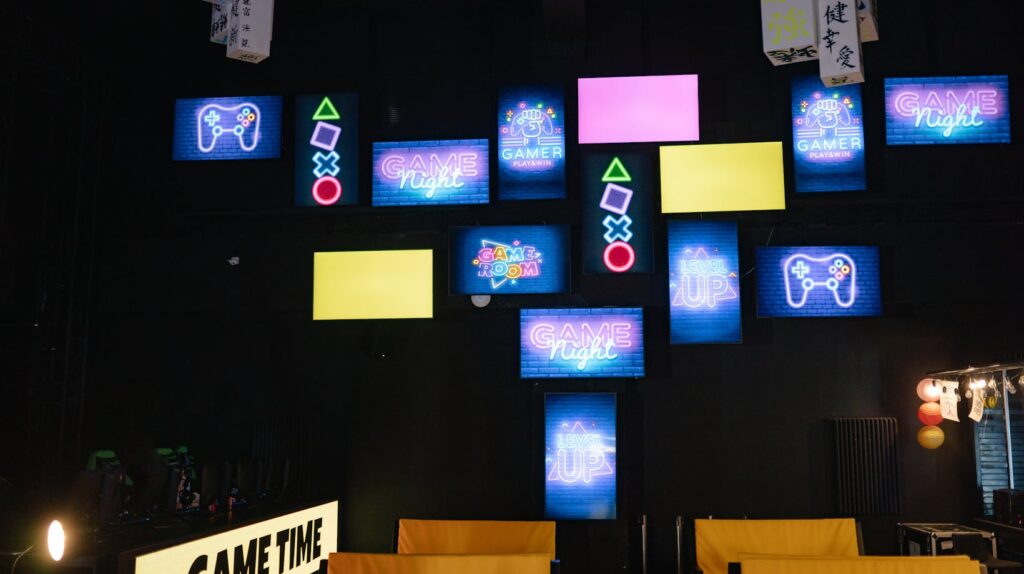Step back in time and immerse yourself in the nostalgia of Namco Arcade Games. From the blips and beeps of Pac-Man to the high-speed thrills of Pole Position, Namco’s iconic titles have defined generations of gaming culture.
The Legacy of Namco Arcade Games
Namco Arcade Games holds a place of prestige in the history of gaming. They defined an era, pushed technological boundaries, and spearheaded innovative gameplay mechanics that have endured the test of time.
Pac-Man, the arcade classic, debuted in 1980, eons before the popular games of today. Its vibrant pixels formed a labyrinth, offering captivating gameplay, accompanied by an unforgettable symphony of arcade sounds.

Galaga, another stellar title in Namco’s arsenal, launched in 1981, forever attached to the annals of video game history. It expanded on the classic Space Invaders format, marrying smooth controls with challenging enemy wave patterns. Its mark is unmistakable, visible in titles, such as Resogun and Geometry Wars, it continues to inspire shooters today.
Namco expanded the possibilities of storytelling within the medium, giving birth to distinct characters and immersive worlds. This sparked an era where narrative became crucial to gaming, a trend visible in today’s expansive RPGs and emotional action-adventures. Namco’s impact echoes through the pages of gaming development history, vivid reminders of its undying legacy.
Namco Arcade Games
Diving into the treasury of Namco’s legacy, several titles shine with timeless glory. Each game, in its unique way, has transformed the gaming industry, inciting change and enthusiasm that persists to this day.

First, Pac-Man, introduced in 1980, it’s a game that trapped players in a neon labyrinth. With bleeping ghosts relentlessly pursuing, it injected a thrill in the gaming experience rarely explored before.
Second, Galaga, debuted in 1981, added depth to the Space Invaders concept. The game featured alien fleets attacking in intricate patterns, demanding keen spatial awareness and sharp shooting abilities from the players.
Third, Pole Position, launched in 1982, bred a generation of virtual racers. With state-of-the-art graphics paired with a first-person perspective, it placed players behind the wheel, marking a revolutionary stride in racing games.
Lastly, Dig Dug, breaking ground in 1982, offered an underground adventure. Players navigated the subterranean maze, battling foes and employing strategic digging, it broke the mold of standard shooting games.
Indeed, the heart of Namco’s charm pulses in its arcade games. These four icons, with their groundbreaking gameplay and timeless appeal, truly embody the spirit of Namco’s legacy. Each title not only shaped its genre but continues to inspire the video game world decades later.
Technological Advances in Namco Arcade Games
Namco’s arcade games initiated several technological leaps in the gaming industry. Pac-Man, for instance, introduced novel artificial intelligence (AI) features in 1980. Rather than following a set pattern, the game’s antagonists, the ghosts, pursued the player using distinctive tactics, giving a sense of unpredictability and escalating challenge. This application of AI set the precedent for enemy behavior in video games.

Likewise, Pole Position, launched in 1982, represented a significant advancement in racing video games. The game’s use of a first-person perspective, previously unseen in the genre, and realistic physics enhanced the player’s immersive experience. It’s still appreciated, indicating the profound influence it’s had on contemporary racing games.
Namco’s innovation didn’t end in game mechanics or storytelling, but extended to hardware as well. The company pioneered the use of specialized hardware for games. Galaga, for example, utilized custom chipsets to facilitate its intricate animations, establishing a standard for animation smoothness in subsequent arcade games.
Furthermore, the driving game Final Lap, released in 1987, was indeed a revolution in itself. It introduced multiplayer networked play, where multiple arcade cabinets could be linked together for multiplayer races. This technical feat paved the way for the multiplayer gaming we enjoy today.
Studying these instances of technological innovation, it’s clear that Namco played an instrumental role in advancing the arcade gaming experience.

